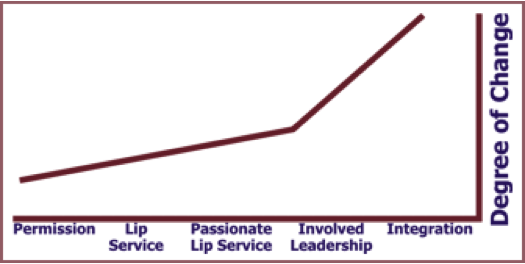Few managers deliberately set out to hurt, sicken or kill people in their organization. Yet many managers (often unconsciously) accept that there will always be some injuries and, regrettably, maybe even a death. Many times these incidents are called "accidents." Too often, they are the predictable outcome of a culture, process and system that is an accident or sickness waiting to happen. Organizations like Ontario’s Workplace Safety and Prevention Services (a member-driven, not-for-profit organization that has become a recognized world leader in building healthier and safer workplaces) is helping managers understand the huge gap between very healthy and safe organizations and their much more dangerous and deadly counterparts in the same industry or location is no accident. Organizations with exemplary safety records and very healthy people (much lower rates of sickness and disease, less absenteeism, reduced stress etc.) achieve their high performance through strong leadership.
Everyone from front-line workers to all levels of management needs to be deeply involved in various health and safety initiatives that also incorporate quality and productivity improvement. Of course, they all go together. Processes that produce lower quality products are generally inefficient and more prone to costly errors that reduce productivity. And, predictably, poorly managed processes or systems produce "accidents."
Today, health and safety is at the point that quality was in the mid-‘80s. Back then, "acceptable quality levels" assumed that defects are inevitable and managers planned for some level of them. Meanwhile, Japanese manufacturers like Sony and Toyota were producing unimaginably low levels of errors in their products that hit or came incredibly close to their targets of zero defects. A popular story was the Japanese electronics component manufacturer that shipped its first order of parts to an American manufacturer with a small package and note that read, "Please forgive us for not fully understanding how you do business in America. Enclosed are the three defective parts per thousand that your specifications asked for." A growing number of North American companies are using Six Sigma principles and approaches to reach quality levels of 3.4 defects per million (99.99999 per cent perfect). A few have actually reached zero defects in some processes.
Whether the focus is quality improvement, stellar customer service or world-class health and safety outcomes, the major ingredient to success is leadership. It's the type of leadership that moves the effort from a program to blame and exhort others to improve, to a process that truly leads by example through management's up close and personal involvement. The chart below is one I use to illustrate this difference.

The bottom axis is what I call the "commitment continuum." There is a world of difference from one end of the chart to the other. But many managers think that they are showing commitment by just giving people permission to implement a program or by providing some money for the effort. In other cases, managers get quite passionate and crank up the rhetoric around the importance of quality, customer service or health and safety. But only when managers reach the point of “involved leadership” does the effort become part of the culture (the way we really do things around here) and really take off to make a lasting change.





